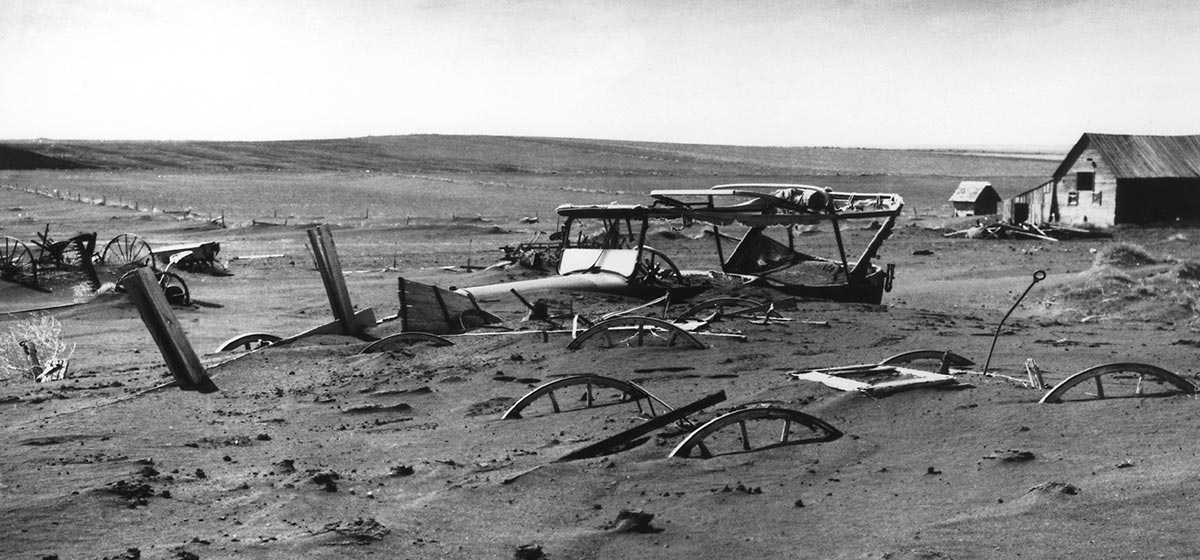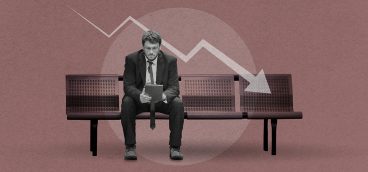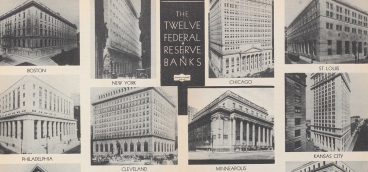The Great Depression vs. the Great Recession

Subsequent to the Global Financial Crisis, U.S. GDP has grown, in the aggregate, 37%. During the period of the Great Depression, U.S. GDP grew, in the aggregate, 40%. In the 1930s, the U.S. economy declined 26% between 1930 and 1933 and unemployment rose to 25%. During the Great Recession the U.S. economy declined 3% and unemployment rose to 9.8%. The early 1930s recession lasted three years and seven months. The Great Recession lasted a mere one and a half years.
In other words, although economic conditions in the 1930s were vastly worse than they were following the Financial Crisis, central bankers and government policymakers managed to grow the economy faster then than now.
If the facts are as they are, why do we remember the Depression period as being so awful?
The reasons the Depression was so difficult are many and complex, but here are a few of them:
The earlier, worse recessions experienced by Americans occurred when we were overwhelmingly poor. Following the long economic boom of the 1920s, many Americans, for the first time, had become much more affluent. It’s easy to go from being poor to being affluent, but it’s hell to go the other way. The Depression sent us back where we’d come from.
It was an unlucky decade. Just as the economy was crashing, the environment also turned nasty. What we now call the “Dust Bowl” was a series of dust storms that clobbered farmers and ranchers in the Great Plains. It was partly a natural phenomenon (recurring droughts hit the plains in 1934, 1936 and 1939) and partly man-made (the failure to use dry-land farming methods). Bankrupted families formed up in caravans (the “Okies”) and headed for California, where there were also no jobs.
It was a politically nasty decade. During the 1930s most of Europe’s population lived in countries governed by extreme political ideas: Communism (the USSR) and fascism (Germany, Italy, Spain and Portugal). Every other country, including the U.S., lived in fear that one or the other of these plagues would engulf them.
War clouds were everywhere. In 1931, Japan seized Manchuria from China; in 1935 Italy invaded Abyssinia (modern Ethiopia); in 1936 Hitler remilitarized the Rhineland and the Spanish Civil War began; in 1937 Japan and China went to war; in 1938 Germany occupied Czechoslovakia; in 1939 Germany attacked Poland, launching World War II. It doesn’t get much worse than that.
Countries hit by the Depression had no social safety nets. Most Americans lived from paycheck to paycheck or from crop to crop. When the paychecks stopped or the crops failed, the wolf was at the door very quickly and governments didn’t consider it part of their jobs to do anything about it.
But my broader point isn’t about how terrible the Depression was or wasn’t; my point is that it was a much more complex phenomenon than we usually give it credit for.
It’s certainly true that in the 1930s central bankers erred on the side of providing too little support for the economy. The reason for this, though, is interesting: there was abroad in the land at the time an idea known as “liquidationism” (not to be confused with the appalling Leninist theory of the same name).
The essence of liquidationism was that the people who had profited mightily during the 1920s boom, and whose bad behavior had caused the crash, should suffer the consequences of their actions. This would wring the excess out of the economy, would rid the country of “zombie” companies, and would remind people of the importance of behaving themselves. There would be a brief period of pain, which would clear the way for a robust and durable recovery.
This may seem unduly harsh, but it’s exactly how the American people feel today about the bankers and others whose greed caused the Financial Crisis. The failure to punish the firms and executives whose behavior had “caused” the Crisis, and the decision by the Fed to lavish money on those institutions and to punish, instead, savers and workers, led, inter alia, to the election of Donald Trump.
Central bankers in the 1930s believed that, following a period of “temporary pain” as the economic bad actors were liquidated, the economy would roar back to life, better than ever. They were both wrong and right about this.
They were wrong because they greatly underestimated the pain that would follow the inevitable collapse of the 1920s boom. Instead of a recession lasting 12 or 18 months, we got a recession that lasted three and a half years. But they were right that, once the bad actors were purged, the economy would roar back to life.
Instead of the Fed-induced “secular stagnation” we’ve endured following the Financial Crisis, the U.S. economy grew 11% in 1934, 9% in 1935, an astonishing 13% in 1936, and 5% in 1937. At that point the Roosevelt Administration, worried about the deficit, raised taxes, and in 1938 the economy shrank 3%. But then it grew 8% in 1939 and 9% in 1940. (And 18% in 1941, goosed by defense spending).
In other words, a hypothetically “perfect” central banker in the 1930s, acting with the benefit of 90 years of hindsight, would have been far more accommodative immediately following the Stock Market Crash in an effort to ease the pain following the end of the 1920s boom. But that “perfect” central banker would then have stopped interfering in the economy so that the thousands of weak firms that had prospered during the boom could fail or be acquired.
Central bankers and government policymakers in those days understood, as their modern counterparts do not, that the “destruction” part of the creative destruction that characterizes free markets is every bit as important as the “creative” part. Leaving thousands of zombie firms and other bad actors alive and taking up space and resources condemns an economy to permanent slow growth.
Next week we will review modern central bankers’ complaints about their 1930s predecessors and cast a revisionist eye on them.





